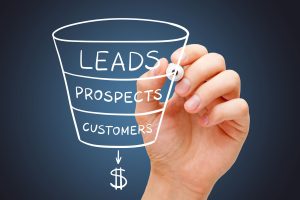Establishing a connection between your Customer Relationship Management (CRM) software and your marketing platform can offer a plethora of benefits to your business. This article aims to guide you through the advantages and technical considerations of connecting HubSpot to Salesforce.
The Benefits of Connecting HubSpot to Salesforce
Integrating HubSpot with Salesforce can lead to a seamless flow of data and more coordinated business operations. Here are some benefits you might experience:
- Unified Data: By connecting HubSpot and Salesforce, you can have all your customer data in one place, improving efficiency and ensuring consistency across platforms.
- Improved Marketing Efficiency: The connection allows for seamless lead nurturing and follow-ups, enabling your marketing team to engage prospects at the right time with the right content.
- Enhanced Reporting: With both platforms working in tandem, your reporting capabilities are amplified. You can gain more comprehensive insights into your marketing and sales activities.
- Personalized Customer Experiences: The integration enables you to leverage customer data from Salesforce in HubSpot, allowing for personalized marketing campaigns.
Technical Considerations When Connecting HubSpot to Salesforce
When embarking on the integration of HubSpot with Salesforce, several technical considerations must be carefully evaluated to ensure a smooth and effective union of these powerful platforms. Here are a few to bear in mind:
- Data Syncing: It’s crucial to configure your data syncing correctly to ensure data consistency across both platforms. You need to set up rules to avoid data discrepancies.
- System Compatibility: While both platforms are designed to integrate well, it’s necessary to ensure that your specific system configurations and customizations in Salesforce are compatible with HubSpot.
- Training: Your team needs to understand how to use both systems in conjunction, which might require training.
- Cost: There might be costs associated with integration, depending on your specific needs and requirements. You should factor this into your budget.
Organizations need to ensure that their existing systems and processes within both HubSpot and Salesforce are compatible with each other. This might involve checking API versions, data fields, and overall system architecture. Customization is another crucial aspect; itu2019s essential to accurately map custom fields and workflows from one platform to the other to maintain data integrity and functionality. Furthermore, data integrity itself is a primary concern. During the integration process, safeguarding data against corruption or loss is paramount, requiring robust backup and data validation strategies.
Additionally, the integration process should follow best practices, including a structured implementation plan, clear data sync rules, and a timeline that minimizes disruption to ongoing operations. Regular maintenance post-integration is also essential to address any evolving technical needs or updates in either platform. Finally, integrating these systems must be done with a keen eye on security and regulatory compliance, ensuring that data transfer and storage meet the highest standards of data protection and privacy laws like GDPR and CCPA. By addressing these technical considerations, businesses can leverage the combined strengths of HubSpot and Salesforce effectively and securely.
Maximizing the Potential of Integration
Training and User Adoption
Maximizing the potential of integrating HubSpot with Salesforce hinges significantly on effective training and user adoption. Ensuring that both marketing and sales teams are proficient in utilizing the integrated features is vital. Comprehensive training sessions should be designed to familiarize staff with the nuances of both platforms, highlighting how they complement each other. Adoption strategies are equally important; they should focus on demonstrating the practical benefits of the integration, thereby encouraging consistent use across teams. Regular feedback mechanisms, such as surveys or discussion forums, can also play a crucial role in identifying areas for improvement and ensuring that the integration serves its intended purpose effectively.
- Staff Training: Ensuring team members are well-trained.
- Adoption Strategies: Encouraging adoption across teams.
- Feedback Mechanisms: Gathering feedback for continuous improvement.
Leveraging Advanced Features
Integrating HubSpot with Salesforce opens up a plethora of advanced features that can significantly enhance marketing and sales efforts. By leveraging the combined power of both platforms, businesses can utilize HubSpot’s robust marketing automation capabilities in tandem with the rich customer data from Salesforce. This integration allows for the creation of highly customized marketing campaigns that are informed by detailed customer insights, leading to more targeted and effective outreach.
Furthermore, the ability to create custom dashboards presents an opportunity for teams to visualize combined data from both systems in a meaningful way, enhancing analytics and decision-making processes. Advanced segmentation becomes more nuanced and effective, as the integrated data provides a deeper understanding of customer behaviors and preferences. This enables businesses to tailor their strategies and communications in a way that resonates more profoundly with their audience, ultimately leading to improved engagement and conversion rates. The integration of HubSpot and Salesforce not only streamlines workflows but also unlocks new possibilities for sophisticated marketing and sales strategies.
- Enhanced Marketing and Sales Efforts: The integration of HubSpot with Salesforce combines marketing automation with rich customer data, leading to more targeted and effective campaigns.
- Custom Dashboard Creation: This integration allows for the development of custom dashboards, providing meaningful visualizations of combined data for improved analytics and decision-making.
- Advanced Segmentation and Personalization: Leveraging integrated data, businesses can achieve deeper insights into customer behaviors and preferences, enabling more nuanced segmentation and tailored communication strategies.
Conclusion
Connecting HubSpot to Salesforce can offer numerous benefits, including unified data and enhanced reporting. However, it’s important to consider technical aspects like data syncing and cost. By understanding these factors, you can ensure a successful integration that brings a new level of efficiency and insight to your business operations.


